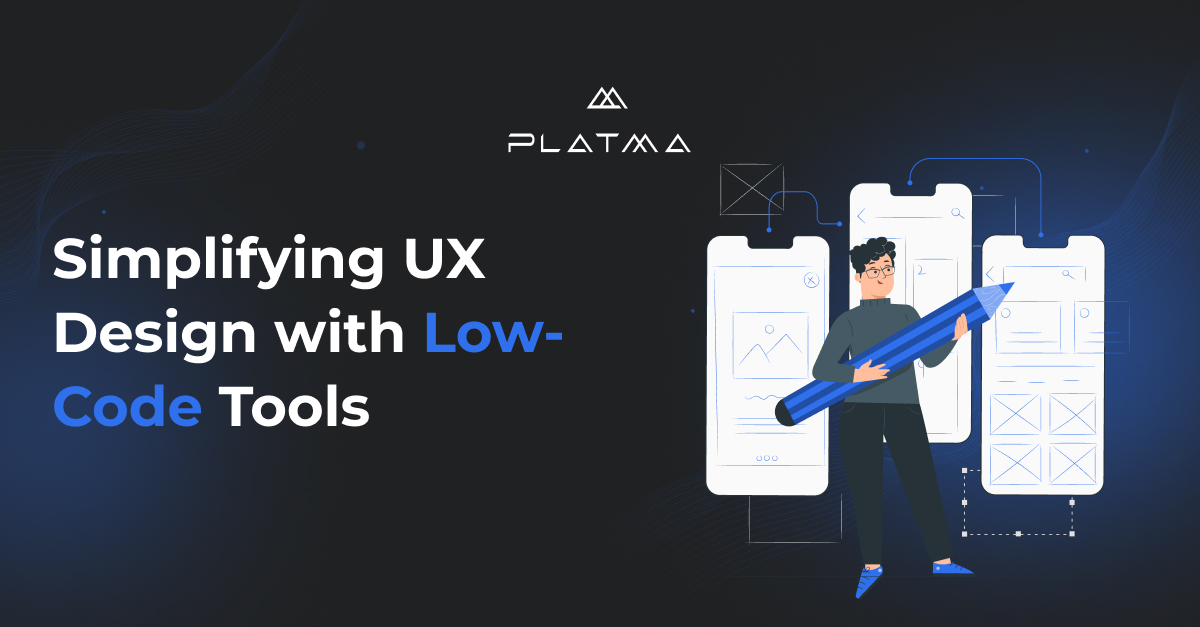Let’s delve into the world of User Experience (UX) design and how low-code tools are revolutionizing the way applications are developed with a focus on user-centricity. With the rapid growth of digital transformation, creating intuitive and seamless user experiences has become a critical factor for businesses to succeed in a competitive landscape. Let’s explore how Platma’s low-code platform is empowering developers to simplify UX design and deliver outstanding user experiences without sacrificing time or quality.
Understanding the Importance of UX Design:
Before we dive into low-code tools, let’s emphasize the significance of UX design in modern application development. UX design is not merely about aesthetics; it’s about crafting interfaces that are intuitive, accessible, and enjoyable for users. A well-designed user experience can significantly impact customer satisfaction, engagement, and overall success of the application.
Challenges in Traditional UX Design:
Traditional software development processes often involve lengthy cycles of design, development, and testing, which can lead to delays in delivering the final product. Additionally, the collaboration between designers and developers may not always be seamless, causing misunderstandings and discrepancies between the intended design and the actual implementation.
How Low-Code Simplifies UX Design:
Low-code platforms like Platma offer a range of tools and features that simplify the UX design process:
- Drag-and-Drop Interface: With a visual development environment, designers can drag and drop UI components to build the application’s layout swiftly. This eliminates the need for manual coding and streamlines the design process.
- Pre-built Templates and Widgets: Low-code platforms often provide a library of pre-designed templates and widgets that designers can leverage to create consistent and aesthetically pleasing interfaces.
- Real-time Collaboration: Low-code platforms facilitate real-time collaboration between designers, developers, and other stakeholders. This enhances communication and ensures that the design aligns with the project’s goals and requirements.
- Responsive Design: Platma’s low-code tools enable designers to create responsive applications that adapt seamlessly to different screen sizes and devices, ensuring a consistent user experience across platforms.
Bridging the Gap Between Designers and Developers:
One of the key advantages of low-code platforms like Platma is that they foster collaboration between designers and developers. Designers can work in tandem with developers using the same platform, reducing miscommunication and expediting the process of turning design ideas into fully functional applications.
Iterative Design and Rapid Prototyping:
Low-code platforms empower designers to iterate quickly and prototype various design concepts. This iterative approach allows for continuous feedback and refinement, resulting in an optimized user experience.
Integrating User Feedback:
Another essential aspect of UX design is incorporating user feedback. Low-code platforms enable developers to integrate user feedback into the application design efficiently. Frequent updates and improvements ensure that the final product aligns closely with the user’s expectations and needs.
Empowering Citizen Designers:
Beyond professional designers, low-code platforms open up the world of application design to citizen designers or business users with limited coding experience. By utilizing low-code tools, these individuals can actively participate in the design process, contributing to more user-centric applications.
In conclusion, Platma’s low-code platform is a game-changer when it comes to simplifying UX design. By offering intuitive tools, real-time collaboration, and rapid prototyping capabilities, UX designers can deliver exceptional user experiences without the complexities of traditional development processes. As businesses strive to stay ahead in the digital era, embracing low-code technology becomes a strategic advantage, enabling them to create user-friendly and engaging applications that resonate with their target audience. With Platma’s low-code platform at your disposal, you can unlock the true potential of UX design and build a future-ready, user-centric application.






